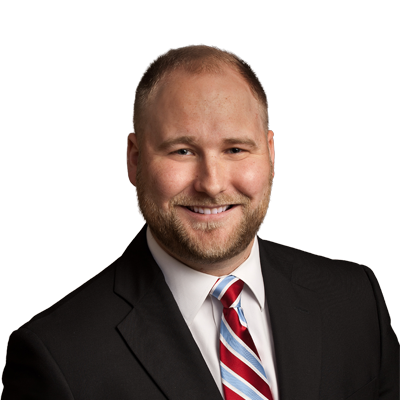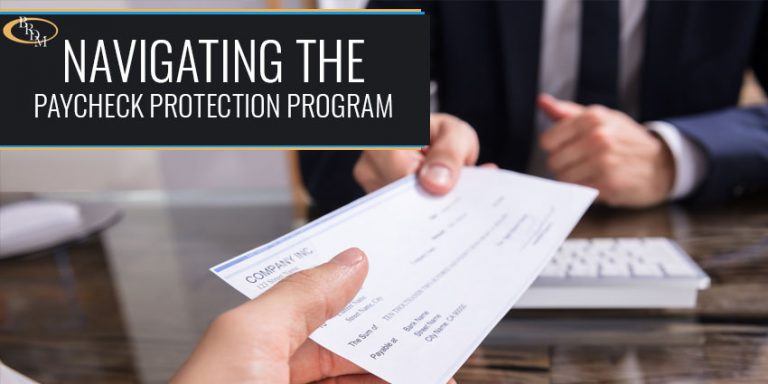In response to the unprecedented Coronavirus (COVID-19) congress recently passed the
Coronavirus Aid, Relief and Economic Security Act (CARES Act). A part of the CARES Act is the
Paycheck Protection Program (PPP) which is designed to assist small businesses with less than 500 employees maintain their employees and payroll for an 8-week period following loan funding. The amount of the PPP loan is the lesser of: 1) $10,000,000.00 or 2) 2.5x the average monthly payroll of the borrower (with certain limitations). The wonderful thing about the PPP loan is that if the guidelines are followed and the funds are used for permissible purposes, the entire loan can be forgiven.
Since the inception of this program, the PPP has proved to be confusing, frustrating, and unorganized. Initially, Congress and the SBA were focused on getting money into the hands of small businesses. When the program opened up the SBA and lenders were overwhelmed and unprepared for the influx of applications from borrowers who were afraid for the future of their businesses. There was such a rush to get the funds out that many questions remained unanswered. In the aftermath of the launch of the PPP program, the United States Treasury has produced what is somewhat of a working guidebook to the PPP. This guide is known as the Paycheck Protection Program Loans Frequently Asked Questions (FAQs) and it is being added to almost daily to answer some of the well-founded questions that small businesses have after applying for and in many cases being funded their loans. In this article, I will address some of the more pressing and confusing issues borrowers are currently facing. If you have more questions I would encourage you to refer to the FAQs which can be found on
the United States Treasury website. As I mentioned, these FAQs are constantly being updated. As of the date of this article, the last update was April 29, 2020 (which is today).
The $100,000.00 Cap of Compensation to Any One Employee:
Question: The CARES Act excludes from the definition of payroll costs any employee compensation in excess of an annual salary of $100,000. Does that exclusion apply to all employee benefits of monetary value?
Answer: No. The exclusion of compensation in excess of $100,000 annually applies only to cash compensation, not to non-cash benefits, including:
- employer contributions to defined-benefit or defined-contribution retirement plans;
- payment for the provision of employee benefits consisting of group health care coverage, including insurance premiums; and
- payment of state and local taxes assessed on compensation of employees.
Payments to Independent Contractors of the Applicant:
Question: Should payments that an eligible borrower made to an independent contractor or sole proprietor be included in calculations of the eligible borrower’s payroll costs?
Answer: No. Any amounts that an eligible borrower has paid to an independent contractor or sole proprietor should be excluded from the eligible business’s payroll costs. However, an independent contractor or sole proprietor will itself be eligible for a loan under the PPP, if it satisfies the applicable requirements.
Guidelines Released After the Application Has Been Submitted:
Question: I filed or approved a loan application based on the version of the PPP Interim Final Rule published on April 2, 2020. Do I need to take any action based on the updated guidance in these FAQs?
Answer: No. Borrowers and lenders may rely on the laws, rules, and guidance available at the time of the relevant application. However, borrowers whose previously submitted loan applications have not yet been processed may revise their applications based on clarifications reflected in these FAQs.
Loan Forgiveness: Eligible Period of Expenses:
Question: The amount of forgiveness of a PPP loan depends on the borrower’s payroll costs over an eight-week period; when does that eight-week period begin?
Answer: The eight-week period begins on the date the lender makes the first disbursement of the PPP loan to the borrower. The lender must make the first disbursement of the loan no later than ten calendar days from the date of loan approval.
“Necessary” Under the PPP:
Question: Do businesses owned by large companies with adequate sources of liquidity to support the business’s ongoing operations qualify for a PPP loan?
Answer: In addition to reviewing applicable affiliation rules to determine eligibility, all borrowers must assess their economic need for a PPP loan under the standard established by the CARES Act and the PPP regulations at the time of the loan application. Although the CARES Act suspends the ordinary requirement that borrowers must be unable to obtain credit elsewhere (as defined in section 3(h) of the Small Business Act), borrowers still must certify in good faith that their PPP loan request is necessary. Specifically, before submitting a PPP application, all borrowers should review carefully the required certification that “[c]urrent economic uncertainty makes this loan request necessary to support the ongoing operations of the Applicant.” Borrowers must make this certification in good faith, taking into account their current business activity and their ability to access other sources of liquidity sufficient to support their ongoing operations in a manner that is not significantly detrimental to the business. For example, it is unlikely that a public company with substantial market value and access to capital markets will be able to make the required certification in good faith, and such a company should be prepared to demonstrate to SBA, upon request, the basis for its certification. Lenders may rely on a borrower’s certification regarding the necessity of the loan request. Any borrower that applied for a PPP loan prior to the issuance of this guidance and repays the loan in full by May 7, 2020 will be deemed by SBA to have made the required certification in good faith.
**The above also applies to businesses owned by private companies under #37 of the PPP published on April 28, 2020**
Calculating Number of Employees (Application and Loan Forgiveness):
Question: To determine borrower eligibility under the 500-employee or other applicable threshold established by the CARES Act, must a borrower count all employees or only full-time equivalent employees?
Answer: For purposes of loan eligibility, the CARES Act defines the term employee to include “individuals employed on a full-time, part-time, or other basis.” A borrower must therefore calculate the total number of employees, including part-time employees, when determining their employee headcount for purposes of the eligibility threshold. For example, if a borrower has 200 full-time employees and 50 part-time employees each working 10 hours per week, the borrower has a total of 250 employees.
By contrast, for purposes of loan forgiveness, the CARES Act uses the standard of “fulltime equivalent employees” to determine the extent to which the loan forgiveness amount will be reduced in the event of workforce reductions.
If you have any questions or need help with PPP Loans, contact the
business attorneys of Battaglia, Ross, Dicus & McQuaid, P.A. today.



